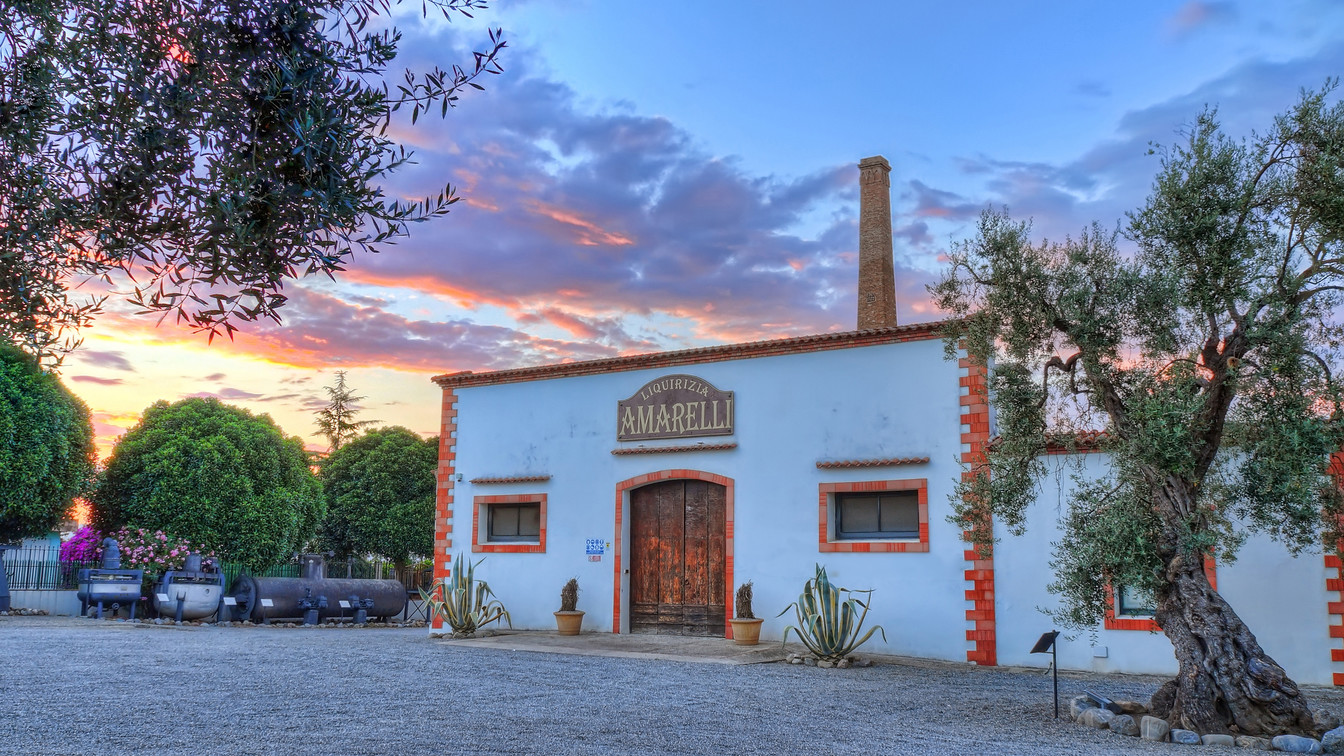

We enter the ‘Giorgio Amarelli’ Museum without really knowing what we will find. We are in Rossano, on the Calabrian coast of Ionian Sea. And, in just a few moments, we realize that this is a journey through history.
It’s the aroma. That aroma, simple and strong, that tells you that you are in a unique place. The color is black, the aroma unmistakable. It is the world of licorice, that you simply have to explore.
This is a fascinating story, to be experienced through documents, books, period photos, but also old farm tools, everyday objects and wonderful old clothes, bearing witness to the life of a family that processes the roots of the licorice plants that grow wild on the Ionian coast (80 percent of national production is in Calabria) and become the stage for a very unusual museum.
Licorice, a simple product, has become an extraordinary driver of the Calabrian economy. ‘Amarelli’ licorice, the most famous in the world, is produced by a family whose origins are lost in the Middle Ages. Certainly, as early as the 1500s, the Amarelli family – which boasts ancient aristocratic traditions – marketed the roots of a plant that has always grown in abundance in these parts: the Glycyrrhiza Glabra, literally meaning ‘sweet root’.
Licorice. The climate and soil composition favored its spontaneous growth. In 1731, an actual factory was founded, called a concio, which is today open to visitors. This is where they began extracting the juice from the roots of the plant. And that is when black and shiny licorice was created. It was highly valued, so much so that in the first half of the 19th century, local production already accounted for 70 percent of national production. And the market was also getting bigger and bigger abroad. One curious fact: they also launched the Lealmair brand – which is just an anagram for Amarelli – which sounded much more international.
Through various technological developments, we arrive at today's production systems, which are, of course, very advanced and often designed based on the experience gained in craft production. But there has never been any question of replacing the indispensable skilled labor. The final touch always falls to the “master licorice maker,” who personally oversees the correct solidification of the product. It is he who knows – and guards – ancient secrets never revealed. Secrets that ensure that the licorice always has that particular flavor and that characteristic sweet smell. Which is also found in the different products you can buy: spezzata, rombetti, favette, bianconeri, and sassolini.
All enclosed in colorful packaging or the iconic metal boxes that also feature vintage designs and images, taken from the extensive archives of Casa Amarelli. Not forgetting the copious production of liquors. Tradition and innovation are perfectly combined in the ‘Giorgio Amarelli’ Licorice Museum, which was awarded the Guggenheim Enterprise & Culture Award in November 2001.
Accompanied by the museum assistants, we then go on to discover the secrets of licorice processing – the bunches of roots ready to be processed, the modern extraction equipment, the ancient cookers where the black licorice paste is thickened, and the bronze dies that give it shape and thickness – in a tour of the production process that is permanently immersed in the sweet scent of licorice and that, like the museum, is a big hit with everyone, adults and children alike.
The chimney, bearing the initials of Baron Nicola Amarelli, towers imposingly from the roof of the concio, at the base of which is the ‘Open Air Museum’ with a unique display of vintage industrial machinery. A totally new adventure that transports you back in time to a thriving past and teaches you about the product as it is made today, to be sampled, at the end of the tour, in the Liquorice Shop and Museum Café.
From raw sticks of root to pure licorice or with mint and anise, from orange, lemon and violet gummies to delicately colored candies, licorice assumes all sorts of different shapes and flavors. You can also pop in to admire the auditorium, a large, cozy and functional space entirely dedicated to events, conferences, screenings and conventions: a facility that is an added value in the local area. It is built as if to give back to the area in gratitude for that which the land has given for centuries: licorice, a simple product with a sweet but strong aroma, capable of transforming the local economy and becoming a global product of excellence.